
When planted strategically around the home, trees can become living, breathing privacy screens that will quickly add beauty and lushness to the landscape.
Trees not only shield you from looky loo neighbors and block out unsightly things, they also reduce noise, act as windbreaks, add value to your property, and encourage more wildlife activity.
There are several things to consider when choosing a tree. The size and shape of the tree at maturity, how quickly it grows, whether it requires pruning and upkeep, and the size of the planting site are all factors that will influence what tree is best for your property.
Here are 10 of our top picks to get you started:
1. Green Giant Arborvitae (Thuja standishii x plicata)
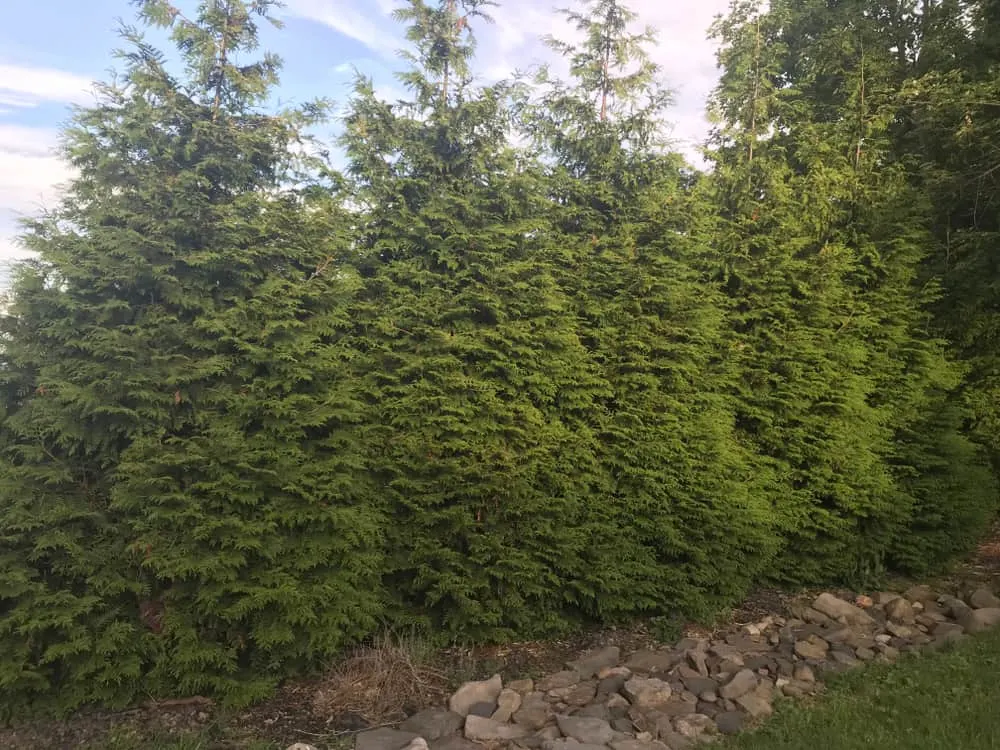
Green giants are a popular choice for privacy tree, and it’s easy to see why.
A low maintenance, drought tolerant, and disease resistant conifer, green giant arborvitae are hardy, evergreen trees that grow super fast until they reach maturity.
With a natural pyramidal shape that requires no pruning, plant these six feet apart and they will fill in in no time.
Hardiness zone: 5 to 8
Sunlight exposure: Full sun to part shade
Height: 40 to 60 feet
Spread: 12 to 18 feet
Growth rate: Fast – 3 to 5 feet per year
2. American Holly (Ilex opaca)
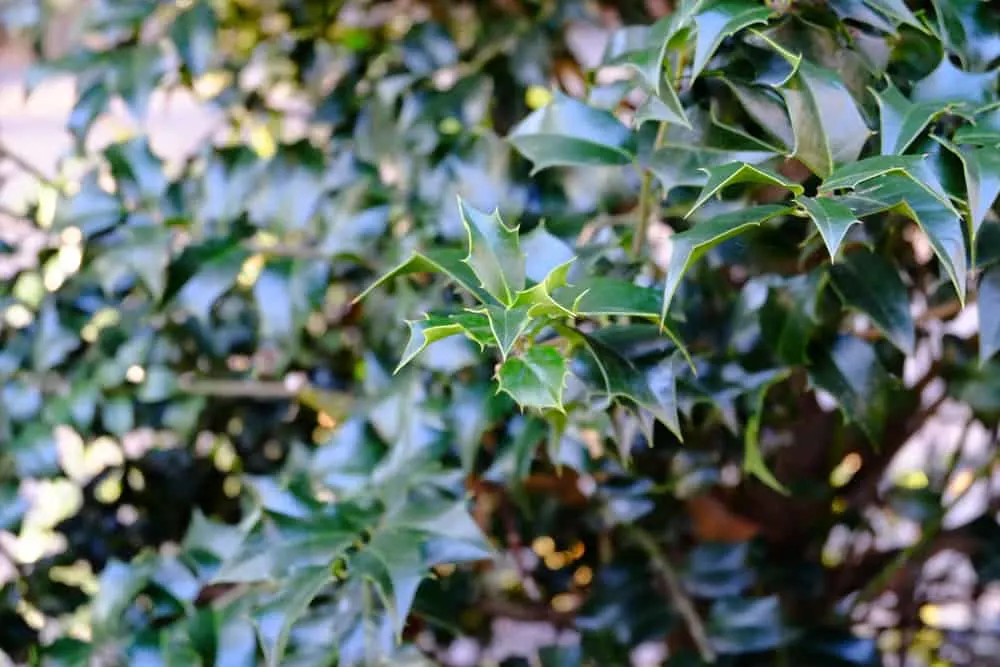
The stuff of Christmas carols, American holly is a handsome broadleaf evergreen with thick, glossy, deep green leaves rimmed with a spiny edge.
In summer, it blooms profusely with small white flowers that become bright red berries in autumn. The fruits, beloved by birds, persist on the tree throughout winter.
American holly is naturally upright and conical in shape but can be trimmed into neat and tidy hedge.
Hardiness zone: 5 to 9
Sunlight exposure: Full sun to part shade
Height: 15 to 30 feet
Spread: 10 to 20 feet
Growth rate: Slow – 6 inches per year
3. Yew (Taxus spp.)
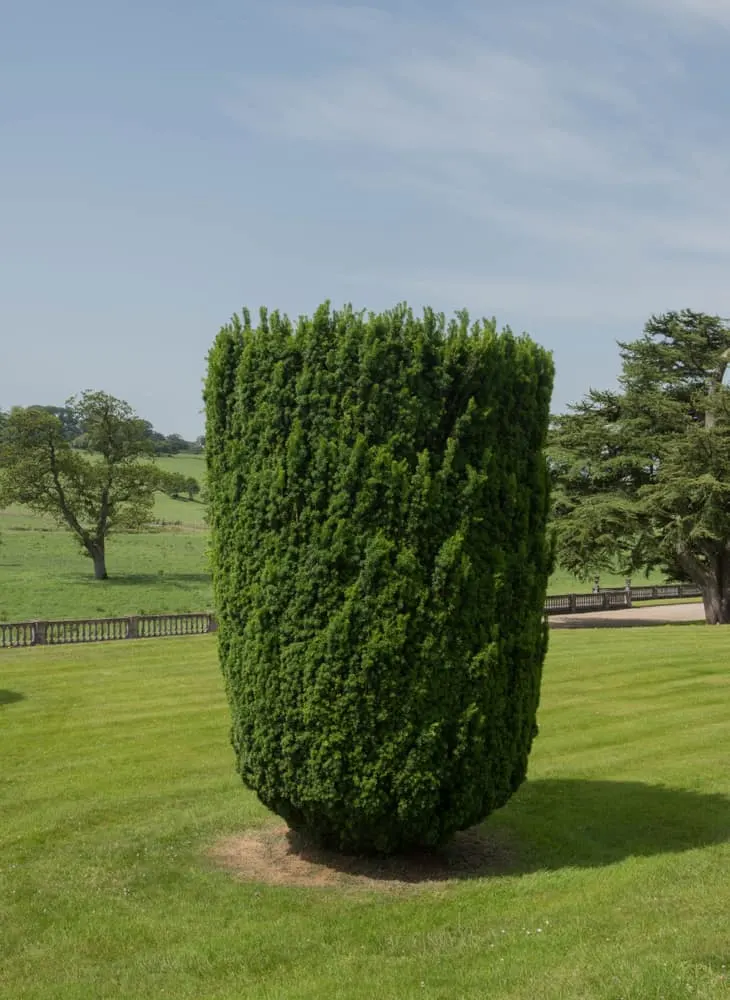
With more than 400 cultivars to choose from, the most commonly sighted yews in the home garden are English yew (T. baccata), Japanese yew (T. cuspidata), and the cold hardy Canadian yew (T. canadensis).
Generally yews are very long lived and feature reddish bark dressed with flat, dark green needles.
Depending on the cultivar, yews may be tall and thin, short and stout, and many variations between. There’s a type of yew for every garden, large or small.
Hardiness zone: 3 to 8
Sunlight exposure: Full sun to part shade
Height: Ranges from 3 feet to 30 feet, depending on the cultivar
Spread: Ranges from 1 foot to 15 feet
Growth rate: Medium – 1 foot per year
4. Leyland Cypress (Cupressocyparis leylandii)
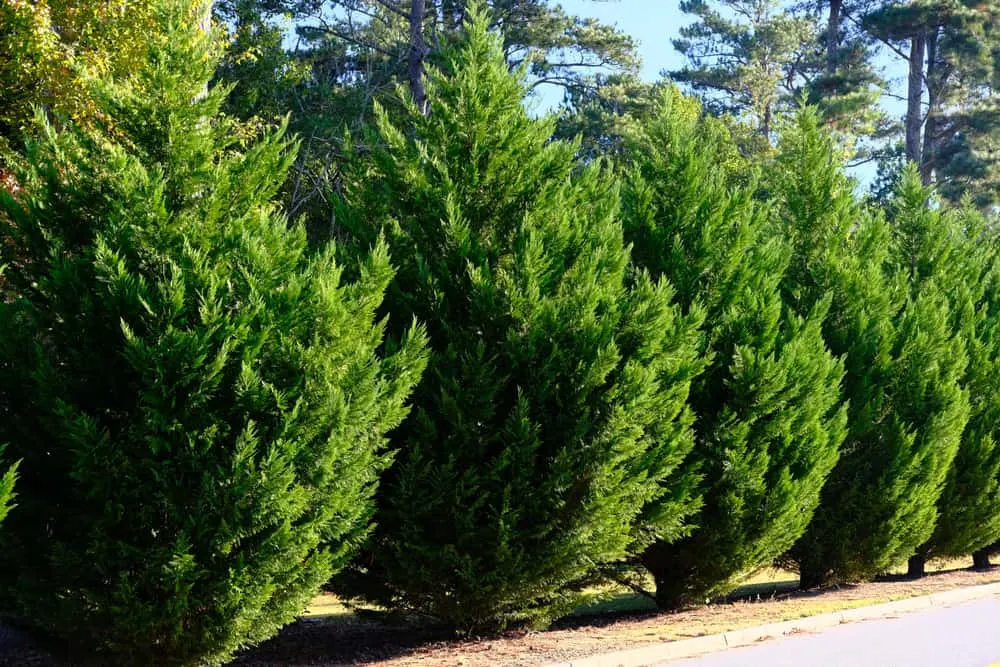
An evergreen suited to warm climates, leyland cypress makes for an excellent privacy tree thanks to its dense branches and quick rate of growth.
Leyland cypress is easy on the eyes too, with an upright pyramidal habit and feathery grey-green foliage. It’s available in numerous cultivars with yellow, bright green, blue-green, and variegated hues.
Hardiness zone: 6 to 10
Sunlight exposure: Full sun
Height: 60 to 70 feet
Spread: 10 to 15 feet
Growth rate: Fast – 3 to 5 feet per year
5. Dappled Willow (Salix integra ‘Hakuro-nishiki’)
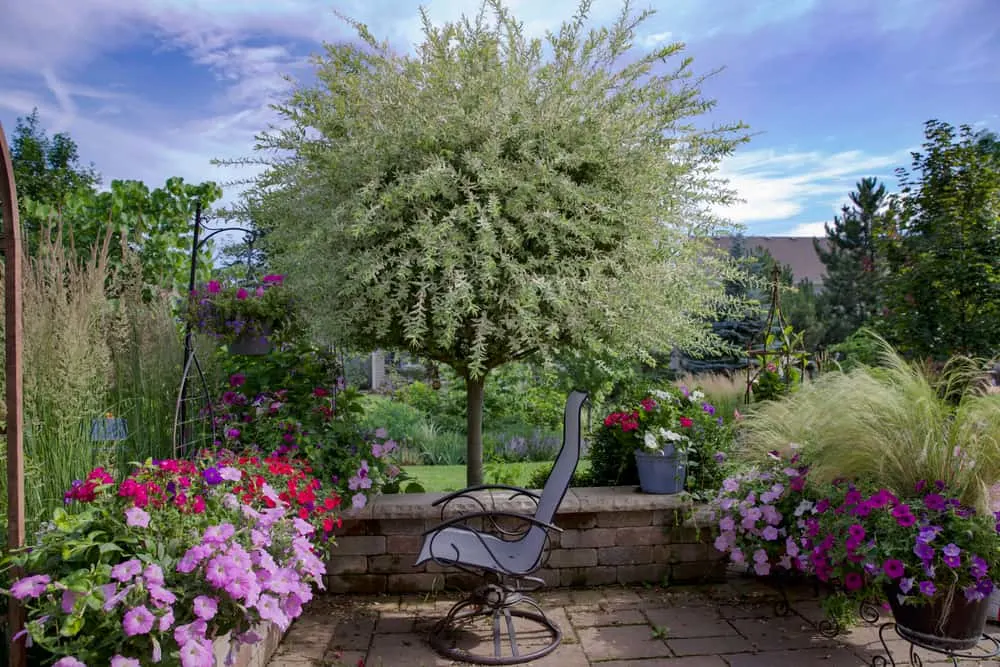
Dappled willow is a small deciduous tree, beautiful throughout the seasons.
A compact and quick grower, it bears small yellow catkins in spring and pale green leaves in summer. In autumn, foliage color turns to yellow and drop late in the season. In winter, bare branches turn a vibrant red hue.
Hardiness zone: 5 to 7
Sunlight exposure: Full sun to part shade
Height: 6 to 10 feet
Spread: 5 to 7 feet
Growth rate: Fast – 4 feet per year
6. Cherry Laurel (Prunus caroliniana)
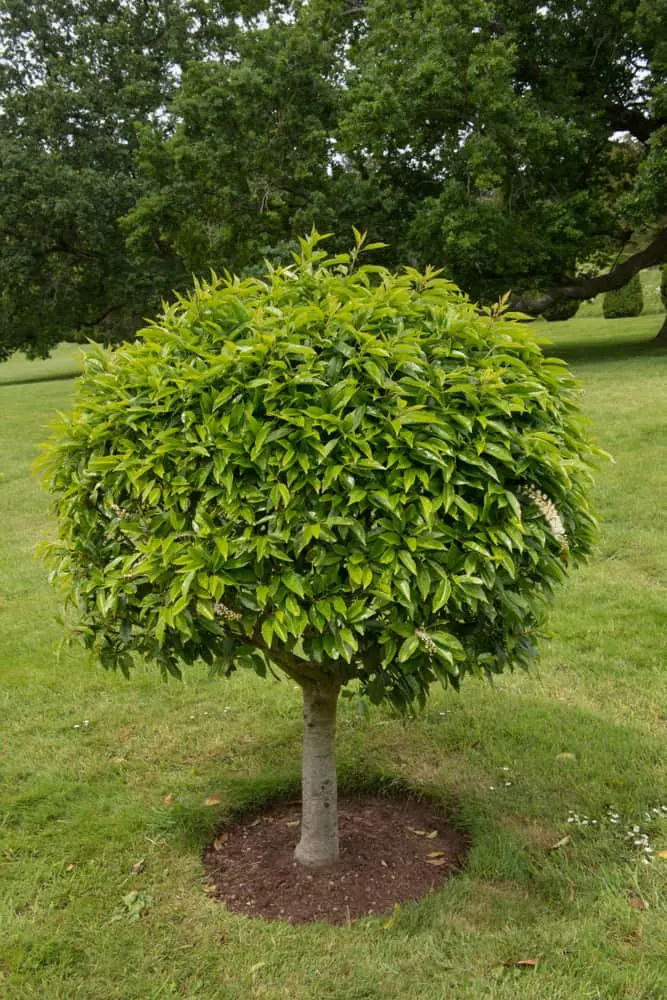
Native to the southeastern US, cherry laurel is an evergreen with glossy, oblong, dark green leaves with a pointed tip, each 2 to 4 inches in length.
Cherry laurel has a naturally dense pyramidal habit but can be pruned into a hedge or shrub for privacy.
It blooms in early spring with white racemes that fill the air with the smell of maraschino cherries.
Hardiness zone: 7 to 10
Sunlight exposure: Full sun to part shade
Height: 15 to 20 feet
Spread: 10 to 15 feet
Growth rate: Fast – 1 to 3 feet per year
7. Boxwood (Buxus sempervirens)
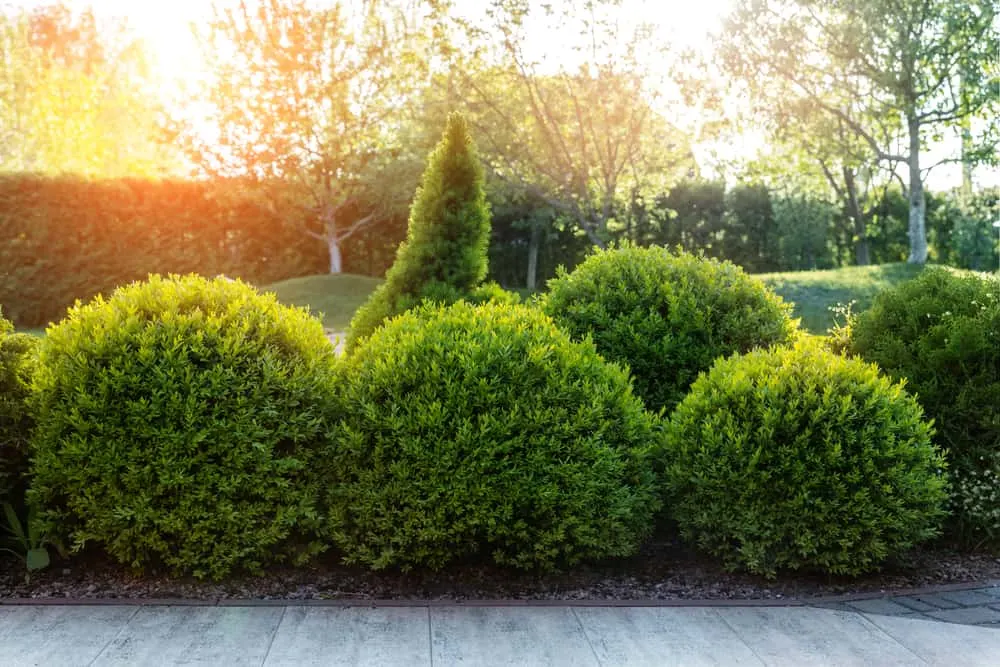
Boxwood may grow slowly, but it is well worth the wait.
Hardy, non-fussy, and low maintenance, boxwood is a broadleaf evergreen with small elliptical leaves, leathery and dark green on top and yellow-green below.
Although boxwood is most often seen as a compact hedging plant, it can actually reach a height of 15 feet when left unpruned.
Try one of the variegated cultivars for a pop of color.
Hardiness zone: 5 to 8
Sunlight exposure: Full sun to part shade
Height: 5 to 15 feet
Spread: 5 to 15 feet
Growth rate: Slow – 7 inches per year
8. Eastern Red Cedar (Juniperus virginiana)
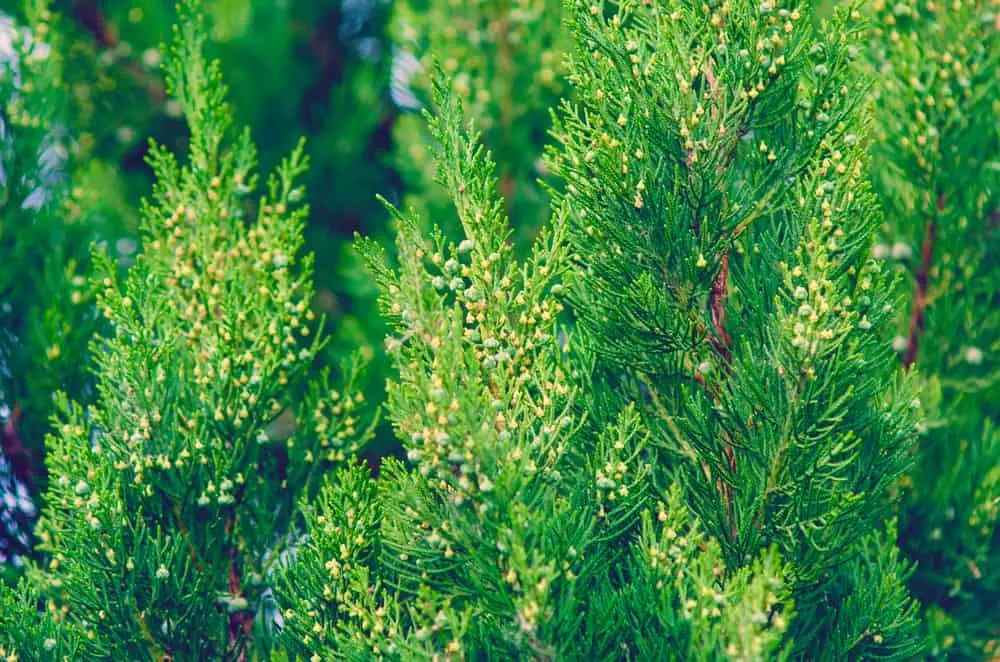
Eastern red cedar is a tough specimen, with the ability to thrive under adverse conditions.
It is one of the first trees to grow in barren lands, otherwise known as a pioneer species.
A densely branched and needled conifer with a columnal profile, it is a good choice when you need an impenetrably large screen or windbreak.
Hardiness zone: 2 to 9
Sunlight exposure: Full sun
Height: 30 to 65 feet
Spread: 8 to 25 feet
Growth rate: Medium – 1 to 2 feet per year
9. Serviceberry (Amelanchier arborea)
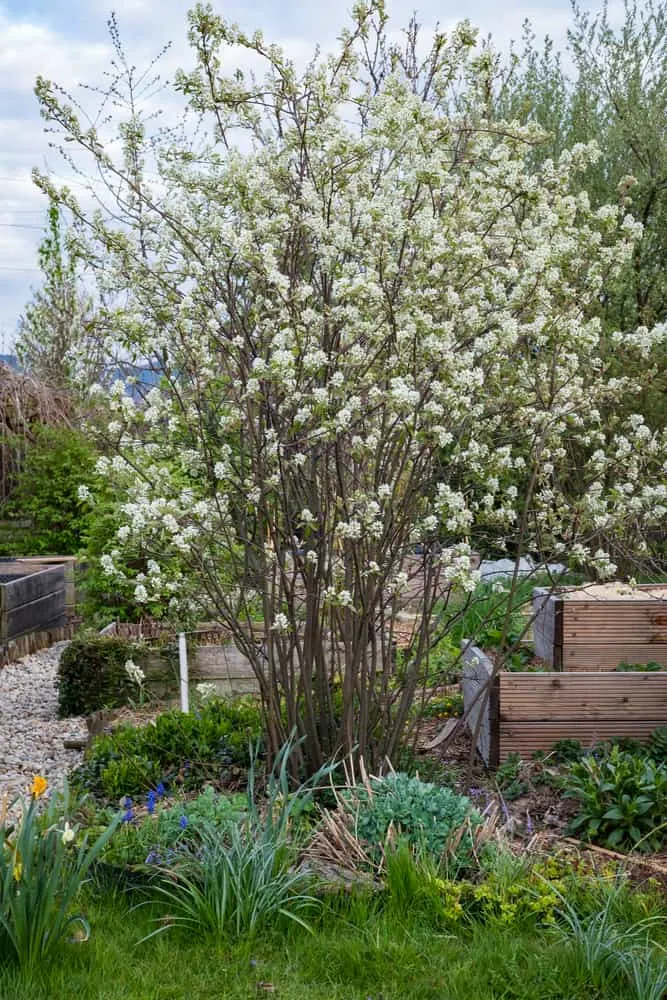
Serviceberry is a small tree or large shrub of the rose family.
Blooming with masses of white flower clusters in early spring, serviceberry produces sweet edible fruits in June that are said to taste like Dr. Pepper. Through summer leaves are green but come fall turn a vibrant pastiche of reds, oranges, and yellows.
Depending on how you prune it, serviceberry can take the appearance of a single trunk tree with a clear stem or a multi stemmed tree with numerous branches emerging from the trunk near the soil line. Leave the root suckers undisturbed to give it a bushier habit.
Hardiness zone: 4 to 9
Sunlight exposure: Full sun to part shade
Height: 15 to 25 feet
Spread: 15 to 25 feet
Growth rate: Medium – 1 to 2 feet per year
10. Rosebay Rhododendron (Rhododendron maximum)
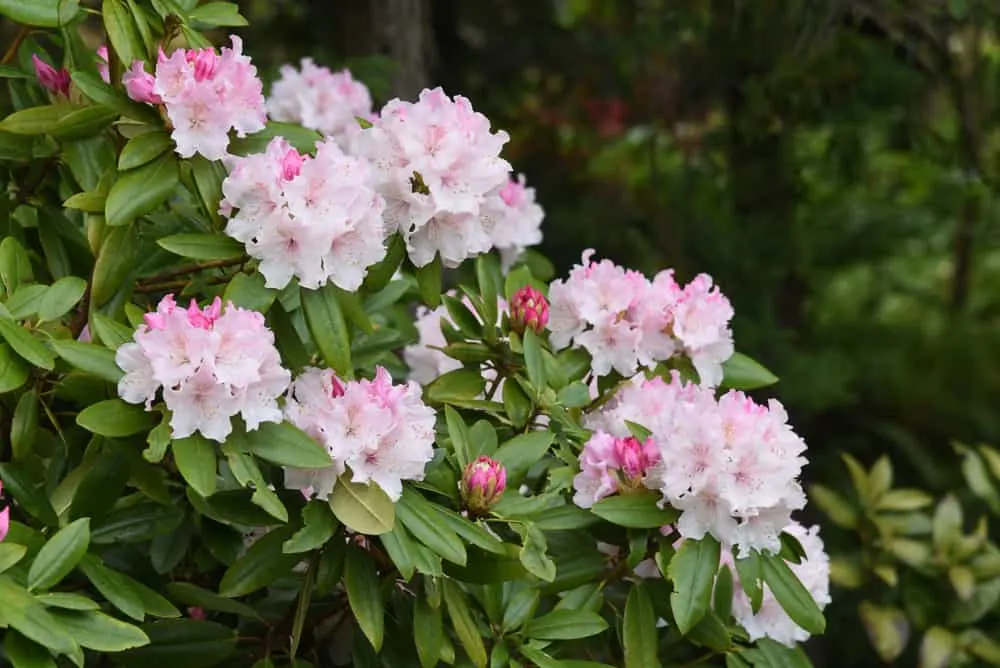
Rosebay rhododendron is a large broadleaf evergreen shrub that blooms late in the season with dense bunches of pink to white flowers, each bloom 2 inches across.
Attractive even when not in flower, rosebay rhododendron has an upright, multi stemmed habit that can form dense thickets in the home landscape. It has huge, strap like, deep green leaves that can reach up to 8 inches in length.
Because rosebay rhododendron requires very little direct sunlight, it is a fantastic option for privacy in a shadier locale. Though it will grow faster and bear more flowers each season when planted in a spot with medium shade.
Hardiness zone: 3 to 7
Sunlight exposure: Part shade to full shade
Height: 5 to 15 feet
Spread: 5 to 12 feet
Growth rate: Slow – 6 to 8 inches per year
